Five Minutes a Day for Fresh-Baked Bread
December 2008/January 2009
http://www.motherearthnews.com/Real-Food/Artisan-Bread-In-Five-Minutes-A-Day.aspx
By Jeff Hertzberg and Zoë François
 |
Baking bread at home saves hundreds of dollars on
groceries every year. With this easy method, each deliciously
crusty-on-the-outside, moist-and-chewy-on-the-inside loaf will only cost
you about 50 cents and 5 minutes a day. We’re not kidding!
MARK LUINENBURG
|
The Secret: Keep Dough Refrigerated.
It is easy to have fresh bread whenever you want it with only five
minutes a day of active effort. Just mix the dough and let it sit for
two hours. No kneading needed! Then shape and bake a loaf, and
refrigerate the rest to use over the next couple weeks. Yes, weeks! The
Master Recipe (below) makes enough dough for many loaves. When you want
fresh-baked crusty bread, take some dough, shape it into a loaf, let it
rise for about 20 minutes, then bake. Your house will smell like a
bakery, and your family and friends will love you for it.
I was
trained as a scientist, not as a chef. That helped in developing a new
process for homemade bread, but I never could have brought the recipes
to this level without the rigorous standards of a professional — my
co-author Zoë is a Culinary Institute of America-trained pastry chef.
Over several years, we found how to subtract the various steps that make
the classic technique so time-consuming, and identified a few that
couldn’t
be omitted. Then Zoë worked some pastry chef magic. She figured out
that we could use stored dough for desserts, too. It all came down to
one fortuitous discovery:
Pre-mixed, pre-risen, high-moisture dough keeps well in the refrigerator.
How it All Began
Like
most kids, my brother and I loved sweets, so dessert was our favorite
time of day. We’d sit in the kitchen, devouring frosted supermarket
doughnuts. “Those are too sweet,” my grandmother would say. “Me, I’d
rather have a piece of good rye bread, with cheese on it. It’s better
than cake.”
Secretly, I knew she was right. I could finish half a
loaf of very fresh, very crisp rye bread by myself, with or without
butter. The right stuff came from a little bakery in Queens. The crust
was crisp, thin and caramelized brown. The crumb was moist and dense,
chewy but never gummy, and bursting with tangy yeast, rye and wheat
flavors. It made great toast, too — and yes, it was better than cake.
When
I was a kid, handmade bread was available all over New York City, and
it wasn’t a rarefied delicacy. Everyone took it for granted. It was not a
stylish addition to affluent lifestyles; it was a simple comfort food
brought here by modest immigrants. But now the ubiquitous corner shops
turning out great European breads are no longer so ubiquitous. And
nobody’s grandmother would ever have paid $6 for a loaf of bread.
So Zoë and I decided to do something about it. Our book,
Artisan Bread in Five Minutes a Day,
is our attempt to help people re-create the great ethnic breads of
years past, in their own homes, without investing serious time or
effort. Using our straightforward, fast and easy recipes, anyone can
create artisan bread and pastries at home with minimal equipment.
Traditional
breads need lots of attention, especially if you want to use a
“starter” for that natural, tangy taste. Starters need to be cared for.
Dough needs to be kneaded until resilient, set to rise, punched down,
allowed to rise. Few busy people can go through this every day, if ever.
What
about bread machines? The machines solve the time problem and turn out
uniformly decent loaves, but unfortunately, the crust is soft and
dull-flavored, and without tangy flavor in the crumb (unless you use and
maintain a time-consuming sourdough starter).
By pre-mixing
high-moisture dough (without kneading) and then storing it, daily bread
baking becomes easy; the only steps you do every day are shaping and
baking. As the dough ages, it takes on sourdough notes reminiscent of
great starters. Because this dough is wetter than most, it can be stored
in the refrigerator for up to two weeks. And kneading this kind of
dough would add little to the overall product; it can actually limit the
volume and rise that you’ll get. That, in a nutshell, is how you make
artisan breads with the investment of only five minutes a day of active
effort.
A one- or two-week supply of dough is made in advance and
refrigerated. Mixing it takes less than 15 minutes. Every day, cut off a
hunk of dough and quickly shape it without kneading. Allow it to rest
briefly on the counter and then toss it in the oven. We don’t count the
rest time or baking time (usually about 30 minutes to an hour each) in
our calculation, because you can do something else while that’s
happening. If you bake after dinner, the bread will still be fresh the
next day (higher moisture breads stay fresh longer), but the method is
so convenient that you’ll probably find you can cut off some dough and
bake a loaf every morning before your day starts. If you want to have
one thing you do every day that is simply perfect, this is it!
Ingredients and Equipment
Great
breads really only require four basic ingredients: flour, water, yeast
and salt. The rest is detail. Here’s a short guide to the basic
ingredients and equipment you’ll need to make artisan loaves.
Unbleached, white, all-purpose flour:
Has adequate protein (around 10 percent) to create a satisfying “chew,”
but low enough to prevent heaviness. We prefer unbleached flours
because bleaching removes some protein, not to mention adding
unnecessary chemicals.
Whole wheat flour:
Contains the germ and bran, both of which are healthful and tasty.
Together they add a slightly bitter, nutty flavor that many people
enjoy.
Bread flour: For chewier bread, substitute
bread flour (about 12 percent protein) for all-purpose white flour by
decreasing the amount slightly (by about a quarter cup for every 6 cups
of all-purpose).
Yeast: Use what’s readily available and buy in bulk rather than packets, which are much more expensive.
Salt: Use noniodized coarse kosher or sea salt.
Baking stone:
Use a high-quality, half-inch-thick stone. The porous stone absorbs
moisture from your dough, allowing a thin, crackling, crisp crust to
form — one of the keys to artisanal baking.
Pizza peel:
This long-handled board helps slide doughs onto a hot stone. A cookie
sheet or cutting board will work, but will be more difficult to handle.
Broiler tray: A pan to hold water for steam during baking.
The Master Recipe
The artisan free-form loaf called the French boule is the basic model for all the no-knead recipes. The round shape (
boule
in French means “ball”) is the easiest to master. You’ll learn how wet
the dough needs to be (wet, but not so wet that the finished loaf won’t
retain its form) and how to shape a loaf without kneading. And you’ll
discover a truly revolutionary approach to baking: Take some dough from
the fridge, shape it, leave it to rest, then let it bake while you’re
preparing the rest of the meal.
Keep your dough wet — wetter doughs favor the development of sourdough character during storage.
You should become familiar with the following recipe before going through any of the others.
Mixing and Storing the Dough
1. Heat the water to just a little warmer than body temperature (about 100 degrees Fahrenheit).
2.
Add yeast and salt to the water in a 5-quart bowl or, preferably, in a
resealable, lidded container (not airtight — use container with gasket
or lift a corner). Don’t worry about getting it all to dissolve.
3.
Mix in the flour by gently scooping it up, then leveling the top of the
measuring cup with a knife; don’t pat down. Mix with a wooden spoon, a
high-capacity food processor with dough attachment, or a heavy-duty
stand mixer with dough hook, until uniformly moist. If hand-mixing
becomes too difficult, use very wet hands to press it together. Don’t
knead! This step is done in a matter of minutes, and yields a wet dough
loose enough to conform to the container.
4. Cover loosely. Do not
use screw-topped jars, which could explode from trapped gases. Allow
the mixture to rise at room temperature until it begins to collapse (or
at least flatten on top), approximately two hours, depending on
temperature. Longer rising times, up to about five hours, will not harm
the result. You can use a portion of the dough any time after this
period. Refrigerated wet dough is less sticky and easier to work with
than room-temperature dough. We recommend refrigerating the dough at
least three hours before shaping a loaf. And relax! You don’t need to
monitor doubling or tripling of volume as in traditional recipes.
On Baking Day
5.
Prepare a pizza peel by sprinkling it liberally with cornmeal to
prevent the loaf from sticking to it when you slide it into the oven.
Sprinkle
the surface of the dough with flour, then cut off a 1-pound
(grapefruit-sized) piece with a serrated knife. Hold the mass of dough
in your hands and add a little more flour as needed so it won’t stick to
your hands. Gently stretch the surface of the dough around to the
bottom on four “sides,” rotating the ball a quarter-turn as you go,
until the bottom is a collection of four bunched ends. Most of the
dusting flour will fall off; it doesn’t need to be incorporated. The
bottom of the loaf will flatten out during resting and baking.
6.
Place the ball on the pizza peel. Let it rest uncovered for about 40
minutes. Depending on the dough’s age, you may see little rise during
this period; more rising will occur during baking.
7. Twenty
minutes before baking, preheat oven to 450 degrees with a baking stone
on the middle rack. Place an empty broiler tray for holding water on
another shelf.
8. Dust the top of the loaf liberally with flour,
which will allow the slashing, serrated knife to pass without sticking.
Slash a 1⁄4-inch-deep cross, scallop or tick-tack-toe pattern into the
top. (This helps the bread expand during baking.)
9. With a
forward jerking motion of the wrist, slide the loaf off the pizza peel
and onto the baking stone. Quickly but carefully pour about a cup of hot
water into the broiler tray and close the oven door to trap the steam.
Bake for about 30 minutes, or until the crust is browned and firm to the
touch. With wet dough, there’s little risk of drying out the interior,
despite the dark crust. When you remove the loaf from the oven, it will
audibly crackle, or “sing,” when initially exposed to room temperature
air. Allow to cool completely, preferably on a wire rack, for best
flavor, texture and slicing. The perfect crust may initially soften, but
will firm up again when cooled.
10. Refrigerate the remaining
dough in your lidded (not airtight) container and use it over the next
two weeks: You’ll find that even one day’s storage improves the flavor
and texture of your bread. This maturation continues over the two-week
period. Cut off and shape loaves as you need them. The dough can also be
frozen in 1-pound portions in an airtight container and defrosted
overnight in the refrigerator prior to baking day.
The Master Recipe: Boule
(Artisan Free-Form Loaf)
Makes 4 1-pound loaves
3 cups lukewarm water
1 1⁄2 tbsp granulated yeast (1 1⁄2 packets)
1 1⁄2 tbsp coarse kosher or sea salt
6 1⁄2 cups unsifted, unbleached, all-purpose white flour
Cornmeal for pizza peel
Tips to Amaze Your Friends
The “6-3-3-13” rule.
To store enough for eight loaves, remember 6-3-3-13. It’s 6 cups water,
3 tablespoons salt, 3 tablespoons yeast, and then add 13 cups of flour.
It’ll amaze your friends when you do this in their homes without a
recipe!
Lazy sourdough shortcut. When your dough
container is empty, don’t wash it! Just scrape it down and incorporate
it into the next batch. In addition to saving cleanup, the aged dough
stuck to the sides will give your new batch a head start on sourdough
flavor.
Variation: Herb Bread. Add a couple teaspoons of your favorite dried herbs (double if fresh) to the water mixture.
Neapolitan Pizza Dough
The
secrets to this pizza are to keep the crust thin, don’t overload it,
and to bake it quickly at a high temperature so it doesn’t cook down to
a soup. It’s unlike anything most of us are used to eating — especially
if you make fresh mozzarella!
1 pound pre-mixed boule dough
Cornmeal for covering the pizza peel
Topping: your favorite seasonal ingredients
- 20
minutes before baking, preheat the oven with a baking stone (scraped
clean) at your oven’s maximum temperature — the hotter, the better.
(Another option is to use the baking stone over a grill, which takes
about two-thirds of the time.)
- Prepare the toppings in advance. The key to a pizza that slides right off the peel is to work quickly.
- Follow Step 5 of The Master Recipe (above).
- Flatten
the dough into a 1/8-inch-thick round with your hands and a rolling pin
on a wooden board. Dust with flour to keep the dough from sticking. (A
little sticking can help overcome the dough’s resistance to
stretching, though, so don’t overuse flour.) You also can let the
partially rolled dough relax for a few minutes to allow further rolling.
Stretching by hand may help, followed by additional rolling. Place the
rolled-out dough onto a liberally cornmeal-covered pizza peel.
- Distribute
your toppings over the surface, leaving some of its surface exposed so
you can appreciate the individual ingredients — and the magnificent
crust! — of the final product. No further resting is needed.
- Turn
on the exhaust fan (or use lower heat and bake a few minutes longer),
because some of the cornmeal will smoke. Slide the pizza onto the stone
(back-and-forth shakes can help dislodge it). Check for doneness in 8
to 10 minutes. Turn the pizza around if one side is browning too fast.
It may need up to 5 more minutes.
- Allow to cool slightly on a rack before serving.
Makes 1 12- to 14-inch pizza to serve 2 to 4.
100 Percent Whole-Wheat Sandwich Bread
Whole
wheat flour has a nutty, slightly bitter flavor, and it caramelizes
easily, yielding a rich, brown loaf. Milk and honey are tenderizers, and
their sweetness complements the bitter notes. Although we’ve showcased a
loaf-pan method here, this dough also makes lovely free-form loaves on a
baking stone.
1 1⁄2 tbsp granulated yeast (1 1⁄2 packets)
1 tbsp plus 1 tsp salt
1/2 cup honey
5 tbsp neutral-flavored oil, plus more for greasing the pan
1 1⁄2 cups lukewarm milk
1 1⁄2 cups lukewarm water
6 2⁄3 cups whole wheat flour
- Mix the yeast, salt, honey, oil, milk and water in a 5-quart bowl or other container.
- Mix in the flour using a spoon, high-capacity food processor with dough attachment, or a heavy-duty stand mixer with dough hook.
- Cover
loosely, and allow to rest at room temperature until the dough rises
and collapses (or flattens on top); about 2 to 3 hours.
- The
dough can be used immediately after the initial rise, though it is
easier to handle when cold. Refrigerate in a lidded (not airtight)
container and use over the next several days.
- On baking day,
lightly grease a 9-by-4-by-3-inch loaf pan. Using wet hands, scoop out a
11⁄2 pound (cantaloupe-sized) hunk of dough. Keeping your hands wet
(it’ll be sticky!), quickly shape it into a ball following the method in
Step 5 of The Master Recipe (above).
- Drop the loaf into the prepared pan. You’ll want enough dough to fill the pan slightly more than half-full.
- Allow the dough to rest for 1 hour and 40 minutes. Flour the top of the loaf and slash, using the tip of a serrated bread knife.
- 5 minutes before baking time, preheat the oven to 350 degrees, with an empty broiler tray on another shelf.
- Place
the loaf in the center of the oven. Pour 1 cup of hot water into the
broiler tray and quickly close the door. Bake for 50 to 60 minutes, or
until deeply browned and firm.
- Allow to cool completely before slicing in order to cut reasonable sandwich slices.
Makes 3 1 1⁄2 pound loaves.
Sticky Pecan Caramel Rolls
This
crowd-pleaser was our first attempt to make dessert from stored bread
dough. It was so successful that it reshaped our view of what this
technique could accomplish. The flavors were enhanced by using stored
dough, and the butter and sugar seeped into the folds, approximating
enriched sweet doughs.
1 1⁄2 pounds pre-mixed boule dough
TOPPING6 tbsp unsalted butter, softened
1/2 tsp salt
1/2 cup brown sugar
30 pecan halves
FILLING4 tbsp salted butter, softened
1/4 cup sugar
1 tsp ground cinnamon
1/4 tsp freshly grated nutmeg
Pinch of ground black pepper
1/2 cup toasted pecans, chopped
- Cream together the
butter, salt and brown sugar. Spread evenly in a 9-inch cake pan.
Scatter the pecan halves over the mixture and set aside.
- Dust
the refrigerated dough with flour and cut off a cantaloupe-sized piece.
Dust the piece with flour and shape it into a ball following the method
in Step 5 of The Master Recipe (above).
- With a rolling pin, roll out the dough to a 1/8-inch thick rectangle. Add only enough flour to prevent it from sticking.
- Cream
together the butter, sugar and spices for the filling. Spread evenly
over the dough and sprinkle with chopped nuts. Roll the dough into a
log. If it’s too soft to cut, chill for 20 minutes.
- With a
serrated knife, cut the log into 8 pieces and arrange over the pecans,
with the “swirled” edge facing up. Cover loosely with plastic wrap and
allow to rest and rise 1 hour (or 40 minutes if you’re using fresh,
unrefrigerated dough).
- 5 minutes before baking time, preheat the oven to 350 degrees.
- Bake
about 40 minutes, or until golden brown and set in center. While still
hot, run a knife around the pan to release the rolls, and invert
immediately onto a serving dish.
Makes 6 to 8 large rolls.
Naan
“Naan
has become my family’s favorite bread to make while camping in the
woods. All we need is a 12-inch cast-iron skillet on our sturdy Coleman
stove to have freshly baked bread. We always attract a crowd of curious
campers drawn to the aroma wafting amidst the wood smoke.” — Jeff
This
delicious and buttery Indian flatbread is traditionally made in a huge
cylindrical clay tandoori oven, with the wet dough slapped directly onto
the oven’s hot walls. Our naan is done in a hot, cast-iron skillet, or a
heavyweight nonstick skillet. Butter or oil will work in lieu of Indian
clarified butter (ghee), but the taste won’t be as authentic. You can
find ghee at South Asian or Middle Eastern markets.
This recipe
also has the distinction of producing our fastest bread, since it’s done
on the stovetop without an oven preheat, and there’s no need to rest
the dough. You can easily make one of these just before dinner, even on
busy nights (so long as you have the dough in the fridge). Makes 1 naan.
1/4 pound (peachsized portion) of pre-mixed boule dough
1 tablespoon ghee (commercial or homemade), or neutral-flavored oil or butter
- Dust
the surface of the refrigerated dough with flour and cut off a
1/4-pound piece. Dust the piece with more flour and quickly shape it
into a ball by stretching the surface of the dough around to the bottom
on all four sides, rotating the ball a quarter-turn as you go. Using
your hands and a rolling pin, and minimal flour, roll out to a uniform
thickness of 1/8-inch and a diameter of 8 to 9 inches.
- Heat a
heavy 12-inch castiron skillet over high heat on the stovetop. When
water droplets flicked into the pan skitter across the surface and
evaporate quickly the pan is ready. Add the ghee or oil.
- Drop the rolled dough into the skillet, decrease the heat to medium, and cover the skillet to trap the steam and heat.
- Check
for doneness with a spatula at about 3 minutes, or sooner if you smell
overly quick browning. Adjust the heat as needed. Flip the naan when the
underside is richly browned.
- Continue cooking another 2 to 6
minutes, or until the naan feels firm, even at the edges, and the second
side is browned. If you’ve rolled a thicker naan, or if you’re using
dough with whole grains, you’ll need more pan time.
- Remove the naan from the pan, brush with butter, and serve.
Caramelized Onion and Herb Dinner Rolls
“A
friend once told me she times her cooking so that the onions are
caramelizing as her guests arrive, claiming there is nothing more
aromatic and inviting. I can’t help but agree with her.” — Zoë
Caramelizing
the onions is easy and rewarding and can be used to dress up any of our
savory doughs. Another favorite is to use the onion mixture with
Manchego cheese as a pizza topping (see the Neapolitan pizza dough
recipe above). Because it takes some time to achieve perfectly
caramelized onions you may want to double the recipe to have some on
hand; they freeze for months.
Makes 6 rolls.
1 pound (grapefruit-sized portion) of pre-mixed boule dough
3 tablespoons olive oil
2 large onions, chopped
1 teaspoon salt
1 tablespoon vermouth or white wine
1 teaspoon white wine vinegar
2 tablespoons brown sugar
1 teaspoon dried thyme or oregano (or 2 teaspoons chopped fresh thyme and oregano leaves)
4 tablespoons water
Freshly ground black pepper, to taste
Cornmeal for pizza peel
- Heat the olive oil in a large
skillet on medium-low heat. Add the onions, salt, vermouth, vinegar,
brown sugar, herbs, and water to the oil and cook for about 25 minutes,
stirring occasionally, until the onions are nicely caramelized. Add more
water when needed to prevent burning.
- Dust the surface of the
refrigerated dough with flour and cut off a 1-pound (grapefruit-size)
piece. Dust the piece with more flour and quickly shape it into a ball
by stretching the surface of the dough around to the bottom on all four
sides, rotating the ball a quarter-turn as you go.
- To form the
dinner rolls, divide the ball into 6 roughly equal portions (each about
the size of a plum). Shape each one into a smooth ball. Allow them to
rest and rise on a cornmeal-covered pizza peel for 40 minutes (or just
20 minutes if you’re using fresh, unrefrigerated dough).
- Twenty
minutes before baking time, preheat the oven to 450 degrees, with a
baking stone placed on the middle rack. Place an empty broiler tray on
any other shelf that won’t interfere with the rising bread.
- Just
before baking, sprinkle the rolls liberally with flour and cut a
1⁄2-inch cross pattern into the top, using a serrated bread knife or
sharp kitchen scissors. Fill the resulting space with about 1 tablespoon
of the onion mixture.
- Slide the rolls directly onto the hot
stone. Pour 1 cup of hot tap water into the broiler tray, and quickly
close the oven door. Bake for 20 to 25 minutes, or until deeply browned
and firm.
- Allow to cool before eating.
HIGHLY RECOMMENDED by the Mother Earth News editors:
Artisan Bread in Five Minutes a Day by Jeff Hertzberg and Zo
ë François (Thomas Dunne Books, an imprint of St. Martin’s Press, LLC, Copyright 2007). The Mother Earth News editors whole-heartedly offer a big fat stamp of approval to this incredible cookbook, which proves hands-down that there is enough time in life for baking, and that baking at home can save you hundreds every year
.
The recipes reprinted here give you just a taste of the numerous treats
you’ll be able to create — deftly! — by mastering one simple technique.
Check it out for all kinds of troubleshooting tips and many more
mouthwatering recipes (Almond Cream Pastry, Chocolate-Raisin Babka or
Homemade Beignets, anyone?).
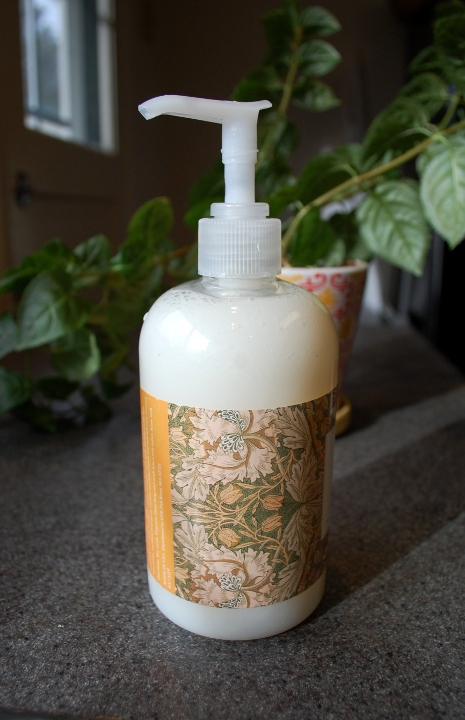
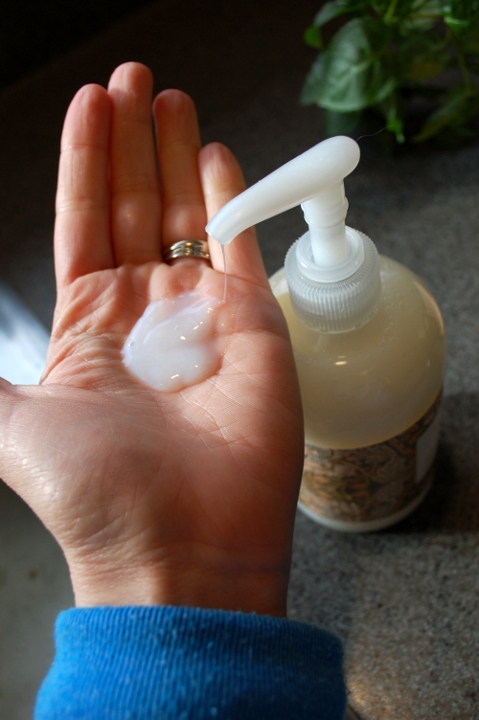
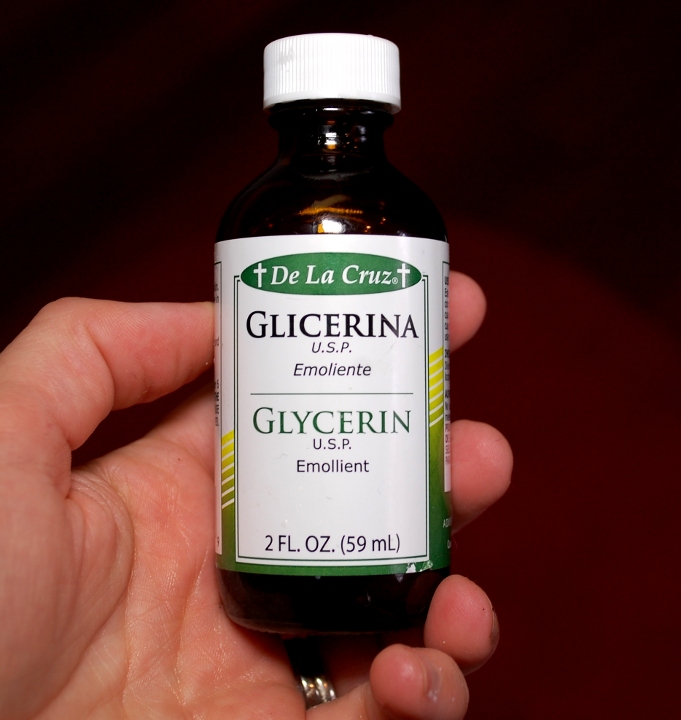
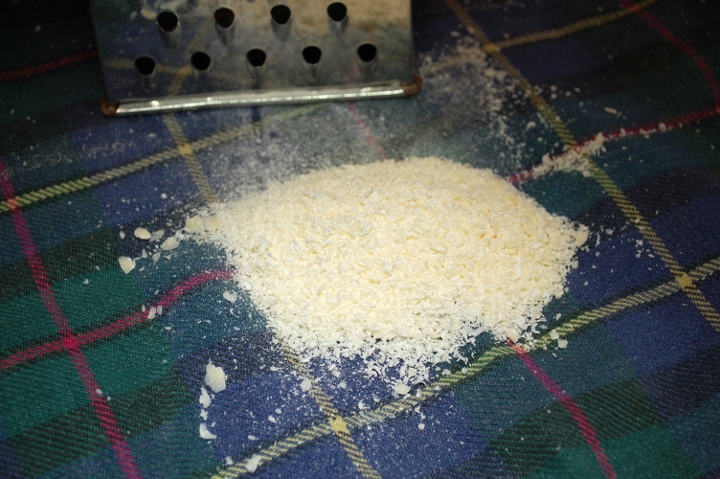
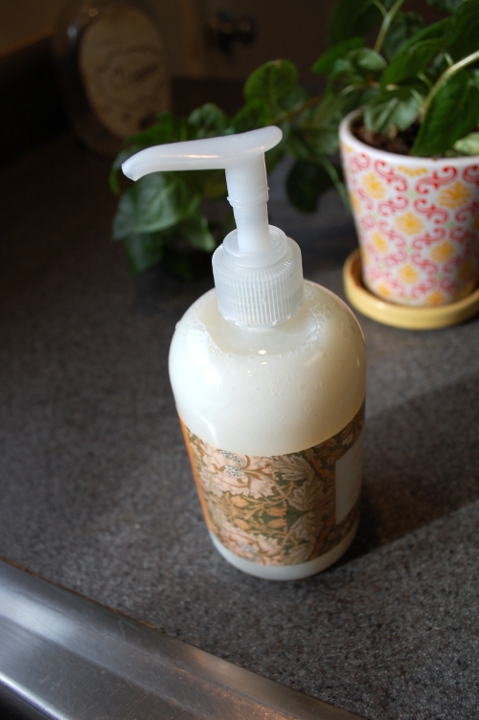





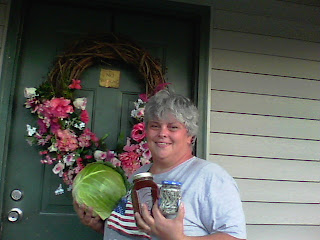






 At
its simplest and most straightforward, yeast bread is made up of flour,
water, salt and yeast. That’s it. Let me list them again: flour,
water, salt, yeast.
At
its simplest and most straightforward, yeast bread is made up of flour,
water, salt and yeast. That’s it. Let me list them again: flour,
water, salt, yeast.  First,
you have to measure/weigh all your ingredients, then mix them together.
This is where the kneading happens. Then, you have to give the yeast a
chance to work, or ferment. (That’s where lots of recipes tell you to
“let dough sit in a warm place until doubled in bulk”). After that, you
need to gently press out the gasses in the dough and redistribute the
yeast.
First,
you have to measure/weigh all your ingredients, then mix them together.
This is where the kneading happens. Then, you have to give the yeast a
chance to work, or ferment. (That’s where lots of recipes tell you to
“let dough sit in a warm place until doubled in bulk”). After that, you
need to gently press out the gasses in the dough and redistribute the
yeast. 


